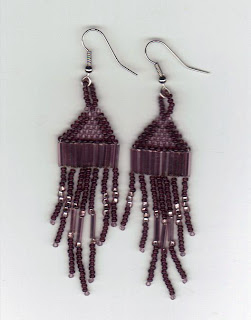The butterfly means mainly transformation, but also positiveness and sensitivity. For the Native American people, the beauty of the butterfly family has been a symbol of transformation, resurrection, giving the ability to rise above humble beginnings. The butterfly follows the natural flow of life in perfect balance and harmony, and brings you the teaching of having the ability to let go of old concepts and expand into the next stage of life. This could mean accepting many changes in your life, be it physical or emotional, like learning how to accept the phases of age, from maiden to mother, and to an elder. Butterfly helps us to transform negative feelings into positive ones, and also brings clarity of mind. It also represents beauty, joy and color as the butterflies are multicolored, winged, joyful little beings.
 |
| beaded medicine pouch |






































